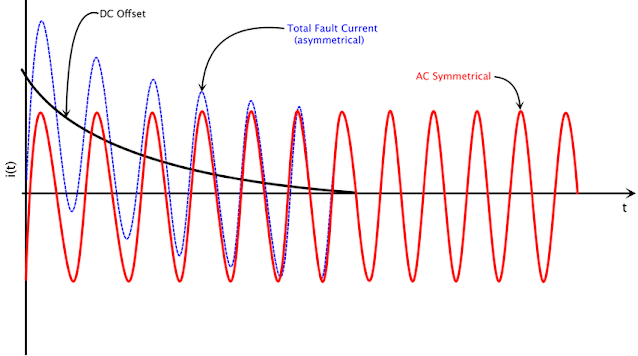Short Circuit Calculation by Impedance Method
Short circuit calculation is of utmost importance in the design and operation of electrical power systems. One of the primary reasons for calculating short circuits is to ensure the safety of the people who work with and around electrical equipment. Short circuits can result in high currents that can cause fires, explosions, and electric shocks, all of which can be dangerous or even fatal. By accurately calculating short circuits, it is possible to design electrical systems that are safe and reliable.
Related Article: Sources of Short Circuit Currents
Short circuits can also cause damage to electrical equipment, such as transformers, switchgear, and other components. By calculating short circuits and designing protection systems that will detect and isolate short circuits quickly, it is possible to minimize the damage to equipment and reduce downtime for repairs. There are many codes and standards that dictate how electrical systems should be designed and operated to ensure safety and reliability.
Short circuit calculation is often required to demonstrate compliance with these codes and standards. Calculating short circuits can help to optimize the design of electrical systems by identifying potential problem areas and allowing for modifications to be made before installation. This can save time and money in the long run by reducing the need for repairs and modifications after installation.
Calculating the fault current in the strategic pre-determined location in the system can help to identify the correct specification of protective devices. This can prevent or minimize downtime and reduce the impact of the fault on the system.
Short Circuit Calculation by Impedance Method
The impedance method for analyzing electrical circuits is a powerful technique that can be used to understand how current flows through a circuit and how voltages are distributed. One important aspect of this analysis is the consideration of short circuits, which occur when a very low impedance path is created between two points in a circuit.
Related Article: How to Solve Short Circuit Using Point to Point Method
Short circuits are important because they can have a significant impact on the behavior of a circuit. When a short circuit occurs, a large amount of current is able to flow through the short circuit path, bypassing the intended circuit elements. This can result in a dangerous situation, such as overheating or damage to the circuit components.
The impedance method can be used to analyze short circuits and to determine the conditions under which they occur. By calculating the impedance of the various circuit elements, it is possible to identify which elements are likely to create a short circuit. For example, if two circuit elements are connected in parallel with a very low impedance path between them, a short circuit is likely to occur.
The general overview in calculating short circuit currents by impedance methods include:
- Determine the circuit elements - The first step is to identify the various circuit elements in the circuit, such as resistors, capacitors, and inductors. This will allow you to determine the impedance of each element.
- Calculate the impedance of each element - The next step is to calculate the impedance of each circuit element, using the appropriate formulas for each type of element. For example, the impedance of a resistor is simply its resistance, while the impedance of a capacitor or inductor will depend on the frequency of the current passing through it.
- Identify the short circuit path - Once you have calculated the impedance of each circuit element, you can identify any low impedance paths that could create a short circuit. This could be due to parallel circuits, or due to a direct connection between two points in the circuit.
- Calculate the total impedance - To calculate the total impedance of the circuit, you can use the formula for calculating the impedance of elements in series or in parallel, depending on the configuration of the circuit. If there is a short circuit path, the impedance of that path will be very low, which will significantly reduce the total impedance of the circuit.
- Calculate the short circuit current - Once you have calculated the total impedance of the circuit, you can use Ohm's law to calculate the current that will flow through the short circuit path. This current will be much higher than the normal operating current of the circuit, which can be dangerous and may cause damage to the circuit.


.webp)











No comments: